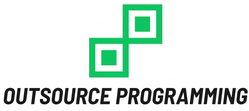In today’s interconnected world, cross-platform outsourcing has become a game-changer for businesses looking to streamline operations and access specialized expertise. By leveraging resources from multiple platforms, organizations can tap into a global talent pool and drive efficiency like never before.
With great opportunities come great responsibilities. As businesses expand their horizons through cross-platform outsourcing, they must navigate the complex landscape of compliance requirements. From data security regulations to industry-specific standards, ensuring adherence across different platforms can be a daunting task.
In this blog post, we will delve into the intricacies of addressing compliance in cross-platform outsourced projects. We will explore the challenges faced in meeting regulatory obligations, examine best practices that pave the way for success, and showcase real-life case studies where compliance measures were effectively implemented.
Understanding Compliance Requirements
Compliance requirements play a crucial role in cross-platform outsourcing projects. It is essential to have a clear understanding of these requirements before embarking on such projects. Compliance refers to adhering to specific rules, regulations, and standards set by governing bodies or industry authorities.
In the context of cross-platform outsourcing, compliance can encompass various aspects such as data protection, privacy laws, security standards, intellectual property rights, and ethical guidelines. Each project may have its own unique set of compliance requirements based on factors like the industry it operates in and the countries involved.
To ensure compliance in cross-platform outsourced projects, organizations must first conduct a comprehensive assessment of their legal obligations. This involves identifying applicable laws and regulations that need to be followed throughout the project lifecycle.
Once compliance requirements are understood, it is important to establish clear communication channels with all stakeholders involved in the project. This includes both internal teams and external vendors or partners. Regular meetings should be held to discuss any updates or changes related to compliance and address any potential issues proactively.
Implementing robust monitoring mechanisms is another key aspect of ensuring compliance in cross-platform projects. Organizations should regularly review processes and practices to identify any non-compliant activities or gaps that need attention. This could involve conducting audits or risk assessments at different stages of the project.
Documentation plays a vital role when it comes to demonstrating adherence to compliance requirements. All relevant policies, procedures, contracts, consent forms (if applicable), and other documentation should be properly maintained throughout the duration of the project.
Understanding compliance requirements is an ongoing process that requires continuous effort throughout the entire lifespan of cross-platform outsourced projects. By actively addressing these requirements right from inception until completion through proper assessment, communication channels establishment monitoring mechanisms implementation; organizations can mitigate risks associated with non-compliance and ensure project success.
Challenges Faced in Ensuring Compliance in Cross-Platform Projects
Ensuring compliance in cross-platform projects can be a complex and challenging task. With multiple platforms involved, each with their own unique requirements and regulations, it can become difficult to keep track of all the necessary compliance measures.
One of the main challenges is maintaining consistency across different platforms. Each platform may have its own set of rules and guidelines that need to be followed, making it crucial for organizations to have a thorough understanding of these requirements. This requires constant monitoring and updating to ensure that compliance measures are up-to-date.
Another challenge is managing data privacy and security across various platforms. Data protection laws vary from country to country, which means that organizations must navigate through a maze of regulations when dealing with cross-border data transfers. This requires implementing robust security measures, such as encryption protocols and access controls, to protect sensitive information.
Communication can pose a significant challenge in cross-platform outsourcing projects. Different teams may be spread across different locations or time zones, making effective collaboration more difficult. Clear lines of communication need to be established so that everyone involved understands their roles and responsibilities regarding compliance.
Ensuring compliance in cross-platform projects often involves working with third-party vendors or contractors who may also have their own set of compliance requirements. Coordinating efforts between multiple parties adds another layer of complexity but is critical for achieving overall project success while meeting all regulatory obligations.
Addressing compliance challenges in cross-platform outsourced projects requires meticulous planning, coordination among stakeholders involved (both internal teams and external partners), staying informed about changing regulations ,and leveraging technology solutions specifically designed for managing diverse compliances seamlessly throughout the project lifecycle.
Best Practices for Addressing Compliance in Cross-Platform Outsourced Projects
When it comes to addressing compliance in cross-platform outsourced projects, there are several best practices that organizations can follow. First and foremost, it is crucial to clearly define and communicate compliance requirements with all stakeholders involved in the project. This includes both internal teams and external vendors or partners.
Another important practice is conducting regular audits and assessments throughout the duration of the project. These checks help ensure that all activities and processes align with applicable regulations, standards, and industry guidelines. It also allows for timely identification of any non-compliance issues so they can be promptly addressed.
Implementing robust data protection measures is essential in maintaining compliance across different platforms. This includes encryption techniques, access controls, secure storage solutions, and proper handling of personally identifiable information (PII). Regular training sessions should also be conducted to educate employees about data privacy laws and security protocols.
In addition to these technical measures, establishing clear lines of communication between all parties involved is vital for successful compliance management. Regular meetings, reporting mechanisms, and feedback loops facilitate transparency and enable effective collaboration between teams.
Lastly but importantly: documentation! Keeping detailed records of all compliance-related activities ensures a trail of evidence that demonstrates adherence to regulations. Documentation should include policies, procedures manuals, incident reports, and any other relevant artifacts.
Successful Implementation of Compliance Measures
In the fast-paced world of cross-platform outsourcing, ensuring compliance can be a daunting task. However, numerous case studies have demonstrated that successful implementation of compliance measures is indeed possible.
One such case study involves a multinational company that outsourced its customer service operations to multiple vendors across different countries. To address compliance requirements, the company conducted extensive due diligence before selecting these vendors. They ensured that each vendor had robust security protocols in place and adhered to industry standards.
This company implemented regular audits and on-site visits to monitor vendor performance and ensure adherence to compliance guidelines. By doing so, they were able to identify any potential risks or gaps in compliance early on and take swift action to rectify them.
Another notable example is a technology startup that outsourced software development for their mobile application. Despite being a small organization with limited resources, they recognized the importance of complying with data protection regulations and privacy laws. To achieve this, they integrated stringent security measures into their development process from day one.
This involved implementing secure coding practices, conducting regular vulnerability assessments and penetration testing as well as encrypting sensitive user data at various levels within the application architecture. These proactive steps not only protected user information but also enhanced customer trust in their brand.
These case studies highlight the significance of taking a proactive approach when it comes to addressing compliance in cross-platform outsourced projects. It is essential for companies to conduct thorough research during vendor selection, implement regular monitoring processes, and integrate strong security measures into project development from inception.
The Role of Technology in Ensuring Compliance
Technology plays a crucial role in ensuring compliance in cross-platform outsourced projects. With the increasing complexity and scale of these projects, manual monitoring and enforcement of compliance measures can be challenging. This is where technology comes to the rescue.
Technology enables real-time tracking and monitoring of activities across multiple platforms. Through automated systems, companies can ensure that all stakeholders involved in the project adhere to compliance requirements at every step. By leveraging data analytics tools, potential non-compliance issues can be identified early on, allowing for prompt corrective actions.
Technology provides secure communication channels for sharing sensitive information related to compliance measures. Encryption technologies help protect data during transmission, minimizing the risk of unauthorized access or breaches.
Software solutions equipped with artificial intelligence (AI) capabilities can analyze vast amounts of data to identify patterns or anomalies that may indicate non-compliance. These AI-driven systems not only streamline processes but also enhance accuracy and efficiency in identifying potential risks.
Technology empowers companies with automation capabilities that facilitate timely reporting and documentation required by regulatory bodies. Manual paperwork is replaced by digital workflows that reduce human errors and ensure accurate record-keeping.
Technology acts as a powerful ally in addressing compliance challenges associated with cross-platform outsourced projects. Its ability to track activities in real-time, provide secure communication channels, leverage AI for analysis purposes, and automate reporting processes significantly contribute to maintaining adherence to compliance requirements throughout the project lifecycle.
Conclusion
Addressing compliance in cross-platform outsourced projects is crucial for businesses looking to maintain data security and regulatory adherence. By understanding the compliance requirements specific to their industry, organizations can better navigate the challenges that arise when working with multiple platforms and vendors.
In order to ensure compliance in cross-platform outsourced projects, it is essential for businesses to establish clear communication channels with all stakeholders involved. This includes conducting regular meetings, providing comprehensive documentation, and defining roles and responsibilities.
Implementing best practices such as performing thorough due diligence on potential vendors, creating a robust contract that outlines compliance expectations, and regularly monitoring vendor performance can help mitigate risks associated with non-compliance.
Case studies of successful implementation of compliance measures serve as valuable examples for other organizations seeking guidance on how to address compliance issues effectively. Learning from real-world experiences can provide insights into what works and what doesn’t when it comes to ensuring regulatory adherence across different platforms.
While addressing compliance challenges in cross-platform outsourced projects may seem complex at first glance, taking a proactive approach by implementing best practices will ultimately lead to improved data security measures and regulatory adherence. With careful planning and strategic execution, organizations can confidently engage in cross-platform outsourcing while safeguarding sensitive information.


Leave A Comment Cancel reply